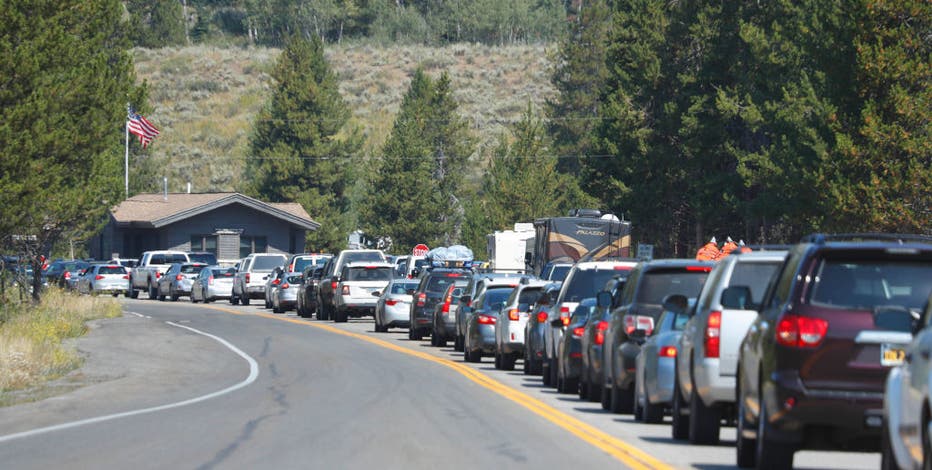2024 Eclipse: Kaufman County issues disaster declaration
KAUFMAN COUNTY, Texas - With hundreds of thousands of people expected to visit for the April 8 total solar eclipse, Kaufman County has issued a disaster declaration.
Judge Jakie Allen issued the declaration from April 5 through April 9.
Kaufman and Terrell are on the centerline of the eclipse, making it a hot spot for tourists. Totality is expected to last longer than 4 more minutes in Kaufman County, which is one of the longest stretches in the country.
More than 200,000 people from near and far are expected to visit Kaufman County for the once-in-a-lifetime event. That more than doubles the county's population.
"There’s been a lot of buzz, and it started a couple months ago," said Barbara Booth, the owner of The Screen Door in Terrell.
A disaster declaration allows public officials to use emergency powers to bring in state resources for help.
"The biggest thing is we don’t know what to expect because we have never done this," said Steve Howie, the Emergency Management Coordinator for Kaufman County.
Judge Allen also sent a letter to Texas Governor Greg Abbott asking him to issue a State Disaster Declaration to get more help from the state.
Featured
2024 Eclipse: Traffic was a nightmare in 2017, TxDOT hopes to keep things moving
The 2017 solar eclipse led to several massive backups on roadways in the path of totality. TxDOT is taking steps to help keep traffic moving on April 8.
Kaufman County says its biggest concern is the traffic and gridlock that could come as the eclipse comes to an end.
Cities along the path of totality during the 2017 total solar eclipse saw gas shortages and people stalled out on roads causing traffic issues.
"We don’t know where they’re going to be, whether it’s in a parking lot or sitting on the side of the highway. That’s one of our fears, if they’re on the side of the highway what can happen," said Howie.
Hotels and RV lots in Kaufman County are sold out.
While you can find cows in the county, emergency management will have a few COWs of their own, meaning "Cell on Wheels," to boost phone service.
READ MORE:
- What causes a total solar eclipse?
- When will the solar eclipse happen near me?
- 2024 Eclipse: Where to watch the solar eclipse in Dallas
- How to get the best view of the solar eclipse
- Businesses encouraged to treat eclipse like snow day, Dallas city officials say
- How North Texans reacted to the solar eclipse in 1979
- What to look for when buying solar eclipse glasses
- Total solar eclipse viewer using cereal box: How to build your own
In Terrell's downtown, businesses are ready as well.
Booth is selling eclipse shirts and other merchandise at her restaurant.
"Expecting to be more than just a one-day thing with travelers coming out, and we’re really pumped. We’re hoping for the best, but kind of at the same time overwhelmed by the possible numbers and how you negotiate that," Booth said.
The next North American solar eclipse in 2033 will only reach Alaska, then in 2044 Canada and North Dakota.
That makes the event in Texas a once-in-a-lifetime experience.
"Everyone is excited about it. I’m a little excited to see everyone come through and see everything," said Linda Wimbley, who lives in Terrell.
The Buc-ee's in Terrell will fill all of its tanks next Friday to get prepared.
They are also selling eclipse glasses starting Friday.
Kaufman County is far from alone in issuing a disaster declaration.
Bell, Kerr, Travis, and Kendall counties have issued an official state of emergency and declaration of disaster.
The states of Oklahoma, Indiana, Ohio, Missouri, New York and Kentucky have alerted residents to be prepared ahead of the upcoming eclipse.
2024 Total Solar Eclipse
The eclipse is expected to pass over Mexico’s Pacific coast, dashing up through Texas and Oklahoma, and crisscrossing the Midwest, mid-Atlantic and New England, before exiting over eastern Canada into the Atlantic.
In prime viewing spots, the totality will last over 4 minutes.
An estimated 44 million people live inside the 115-mile-wide path of totality stretching from Mazatlán, Mexico to Newfoundland; about 32 million of them are in the U.S., guaranteeing jammed roads for the must-see celestial sensation.
North America won’t experience totality again until 2033, with Alaska getting sole dibs. Then that’s it until 2044, when totality will be confined to Western Canada, Montana and North Dakota.
There won’t be another U.S. eclipse, spanning coast to coast, until 2045. That one will stretch from Northern California all the way to Cape Canaveral, Florida.
The Associated Press and FOX Weather contributed to this report.


